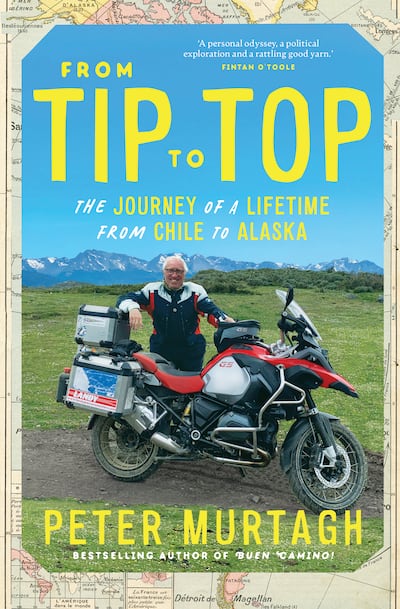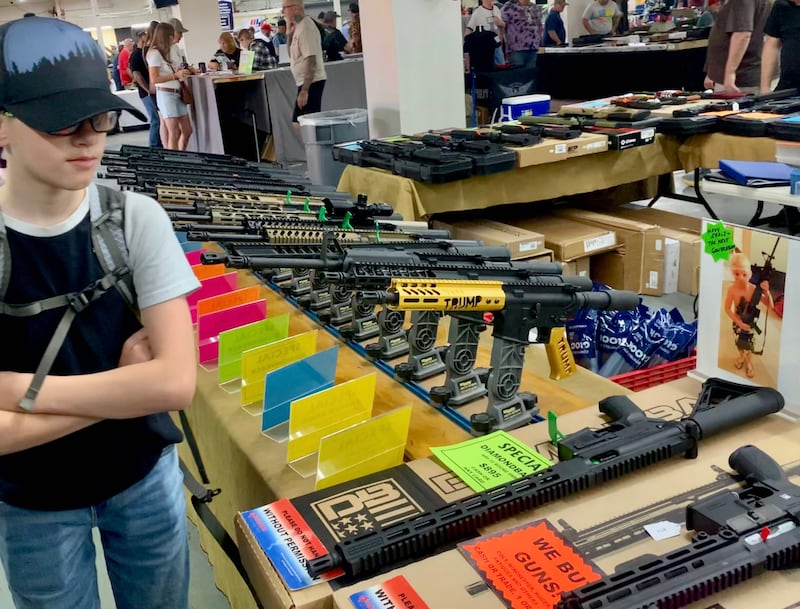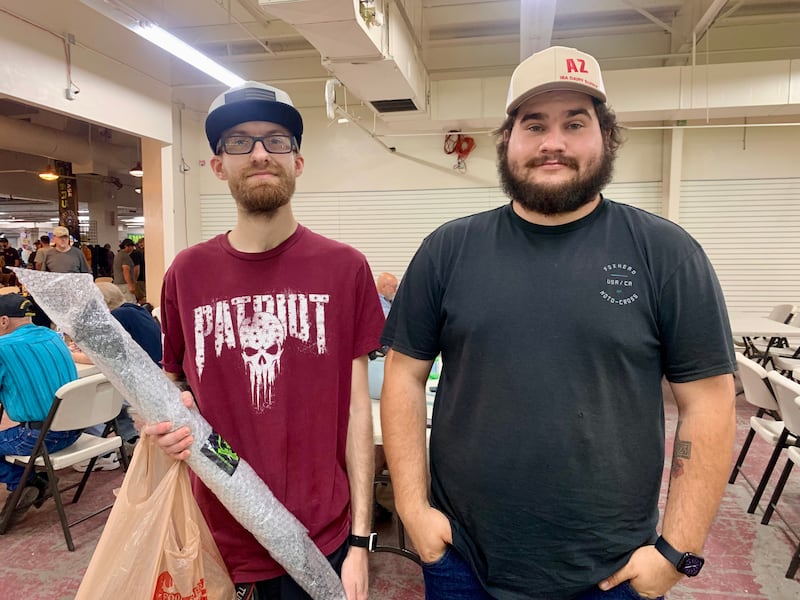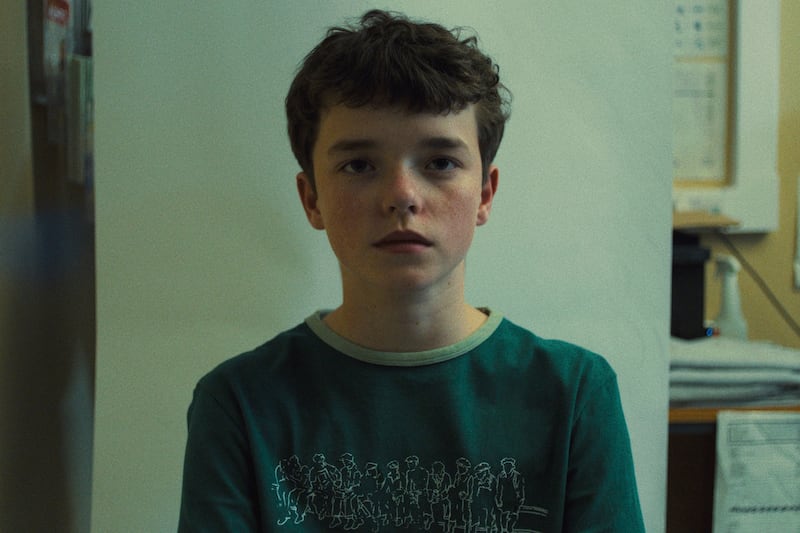Thoughts brooding in my head since crossing from Mexico into Texas came into focus a fortnight later as I sat having breakfast in Rose’s Sugar Shack Café on southern California’s Pacific coast – two eggs over easy, crispy bacon, hash browns, toast with blueberry jam and lashings of coffee.
I was about 17,000km into what would ultimately be a 45,000km motorcycle Odyssey from Puerto Williams in the far south of Chile to Deadhorse in northern Alaska. Riding solo for eight months, over such a long distance and varied terrain, gives you plenty of time to think, as well as to observe, noticing things that might otherwise, were you in company, just pass you by, part of the general blur of the journey.
The Sugar Shack was a pretty little cabin made of brick and timber, painted seaside blue, pastel pink and white, and was right on the Camino Real, just south of well-heeled San Clemente. It was watching the waitresses that crystallised my thoughts. Here were six women, maybe eight, if my memory isn’t playing tricks, and they were all elderly.
And that was the point: why weren’t these women, well into their 60s if not their 70s, retired and at leisure, instead of working hard, run off their feet serving diners in a packed, small daytime eatery?
‘Our daughter is almost 40 and moving out soon, but she has told her son that he can stay with us’
Irish Times readers pick Claire Keegan’s Small Things Like These as the best Irish book of the 21st century
‘I grew up in an apartment in another country. I bought an apartment in Dublin and had to get out after a year’
Adolescence: Five truths about our teenage boys we need to address urgently
Almost every cafe or restaurant, indeed almost every retail outlet of any description that I had entered in Texas, and since there, passing through New Mexico, Arizona and into California, was staffed by a high proportion of people of retirement age, and frequently they were women.
In hospitality outlets, you’d expect the staff to be mostly youngsters, college kids perhaps, squirrelling away beer money or saving for that gap year. But it seems that in the US, many elderly remain in the workforce because they have to – because they have no pension, or whatever pension they have is so inadequate that they feel they have no option but to carry on working.
[ Peter Murtagh: Boy, they sure don’t like Joe Biden down here in TexasOpens in new window ]
Some undoubtedly do so out of choice, maybe for the company it gives them or because it creates structure to an otherwise empty day. But many do so out of sheer necessity, or so I was told whenever I asked, and in hospitality, they live mostly off tips.
I had set out earlier that morning from Oceanside, a nondescript place about 40 minutes north of San Diego. Getting there from Yuma in Arizona (“the sunniest city on earth”, according to the Guinness Book of Records), I scooted around San Diego in a sweeping arc, rather than enter it, and went straight on up the Pacific coast.
At Oceanside, I stopped for the night, one of the very few spent in a US motel because they are so expensive. Few charge under $100 a night for a very basic room and you get to more than €200 really fast. So mostly I camped in Recreational Vehicle (RV) parks, or State and National Parks. The RV parks charge about $45 a night for a tent pitch, with access to loos, a shower and often a small convenience store. The parks cost between $20 to $25 and usually come with loos and no shower, but they are generally set in wild, beautiful places, often waterside and with a firepit.

Next morning, heading north out of Oceanside along the freeway, a sign indicated San Clemente and El Camino Real. I turned, curious to know more about the Camino. It’s essentially a road that threads its way from southern California north to San Francisco, stitching together notable places relating to the region’s Spanish/Mexican heritage.
But then came the Sugar Shack Café, and so I stopped, parked my heavily loaded BMW R1200 GS Adventure motorbike and, as I walked inside, picked up a copy of the Orange County Register free at the entrance door.
[ From Tip to Top: The Journey of a Lifetime, From Chile to Alaska is an inspiring and absorbing read ]
An inside page announced the departure from the local council of one Gene James, a former mayor, ex-military policeman and security professional, who was joining the ranks of the retired. James, evidently a spiky character with strong Republican Pro-Trump views, had had enough of “urban sprawl, the tolerance for vagrants, crime and congestion” and was opting for the wide-open spaces of Wyoming, where he would “live off the land”.
And, he told the Register, “most importantly . . . [I can] own and possess firearms without the fear of a state with intentions to seize them”.
In Bandera, Texas, I was assured that inside every vehicle I could see, there was almost certainly a weapon
So for Gene James, at 69 almost exactly the same age as me, the most important thing about his retirement move was the freedom to own and keep guns.
Looking back over almost three months travelling in the States (Oregon, Washington and then Alaska, via Canada), it seems to me that there’s a lot of anger there right now. There’s anger about Biden. Anger about Trump. Anger about liberals and about conservatives. About them, and the others, whoever they are – Mexicans, migrants, metropolitan elites, uneducated red necks, smart-ass college graduates.
Basically, for many people, their anger is about the sort of people who are not like them.
And the lightning rod subject that seems to overlap all others is guns. America – the US – is nuts about guns. Really nuts. I knew that before this trip, but experiencing it for real is different.
[ Peter Murtagh: A journey through the Americas: Soldiers, flamingos, AndesOpens in new window ]
In Bandera, Texas, (“Cowboy Capital of the World”; population 839) I was assured that inside every vehicle I could see, there was almost certainly a weapon. I didn’t test the assertion, but Texas is an “open carry” state which means a gun owner can carry a weapon, in a holster but visible, without any special licence.
On the way to Marfa, an Art Deco desert town in west Texas near the Mexico border, I met another biker and we rode a little before having breakfast at Magoo’s Place in Alpine. Standing in the parking lot and about to go our separate ways, we had a gun conversation.
“Sure do,” he said when I asked him if he carried one.
It was in the bag strapped onto his fuel tank, there for quick access, should he ever need it. Had he? I asked. No, was the answer, but you never know ... best to have one just in case. I told him that I had come all the way up through South America, from Tierra del Fuego, through Peru and Colombia and all the way through Central America, and had never felt afraid or threatened or in need of a gun, despite several dodgy situations along the way.
I’m not sure he believed me.
Gun culture was alive and well in Tucson, Arizona, when I got there a few days later, in time for one of the many gun shows staged in the city’s ExpoCenter. Outside the entrance, a sign said – weirdly I thought – no guns allowed inside. Another sign in a car windscreen announced that Joe Biden was senile.
In the exhibition hall, garish T-shirts were emblazoned with the Stars and Stripes, flying eagles, and words such as God, Family, Guns and Freedom. Many proclaimed the Second Amendment, which enthusiasts cite in defence of their right to own guns, including lethal, military-grade weapons.
The weapons displays were standard for the occasion, but extraordinary to me – table after table laden with knives and military paraphernalia, handguns, bullets and semi-automatic rifles, including the infamous AR15, America’s weapon of choice in innumerable shopping mall and school massacres. Some of the guns had the name TRUMP cut out in filigree on their handguard.

The place was packed. Kylen and Cody were searching for a good deal on an AR10. AR stands for ArmaLite, after the original maker, and not assault rifle, a popular misconception. Kylen, who looked to be in his early 20s, already had five guns, but wanted more. The pair got one and headed off to shoot mule deer, they said.

Lee Dayley was a gun maker, selling his own version of the AR15. He had lived for a time in Dublin, proselytising for the Church of Latter Day Saints (the Mormons), of which he and his family are very active members. A warm and friendly man, we chatted amiably. Lee took issue with the term “mass shooting” (it’s defined as any shooting with more than three victims) and reckoned school shootings could be stopped with armed guards and X-ray screening at entrances.
Riding up through California, I experienced unselfish hospitality and met other bikers who were a joy to be with
A long conversation with another man showed how immovable are the views of gun enthusiasts. I said to this man that there wasn’t another country on the face of the Earth that had mass shootings, like the US does, on an almost weekly basis. More than 48,800 people were shot dead in the US in 2021, according to the most recent stats – the worst year since records began. Of them, 54 per cent were due to suicide – which means that some 24,000 people, about the population of Athlone, were killed, either in anger or by accident.
How come other countries didn’t have this problem, I asked the man.
“Because we have more freedom in America,” he replied.
There is no room for discussion, for reason, common sense or evidence-based argument, when faced with such a view. You just gotta move on.
And yet, the people who espouse such views, who support Trump and think Biden is the worst president in US history, ever, can also be the nicest, most welcoming, and most personally generous people you’ll meet anywhere.
Riding up through California, I experienced unselfish hospitality and met other bikers who were a joy to be with.
I cannot explain the paradox, only to say that, bottom line, the more educated, experienced and worldly-wise people who do support Trump, and should know better in my opinion, do so mostly for personal and deeply selfish reasons – he lowered their tax dollars, and because of that, they’ll vote for him again.
Simple as.
Peter Murtagh travelled by motorbike from Tierra del Fuego, at the tip of South America, to Alaska, at the top of North America. His book on his journey, From Tip to Top, is published by Gill Books
- Sign up for push alerts and have the best news, analysis and comment delivered directly to your phone
- Find The Irish Times on WhatsApp and stay up to date
- Listen to our Inside Politics podcast for the best political chat and analysis














